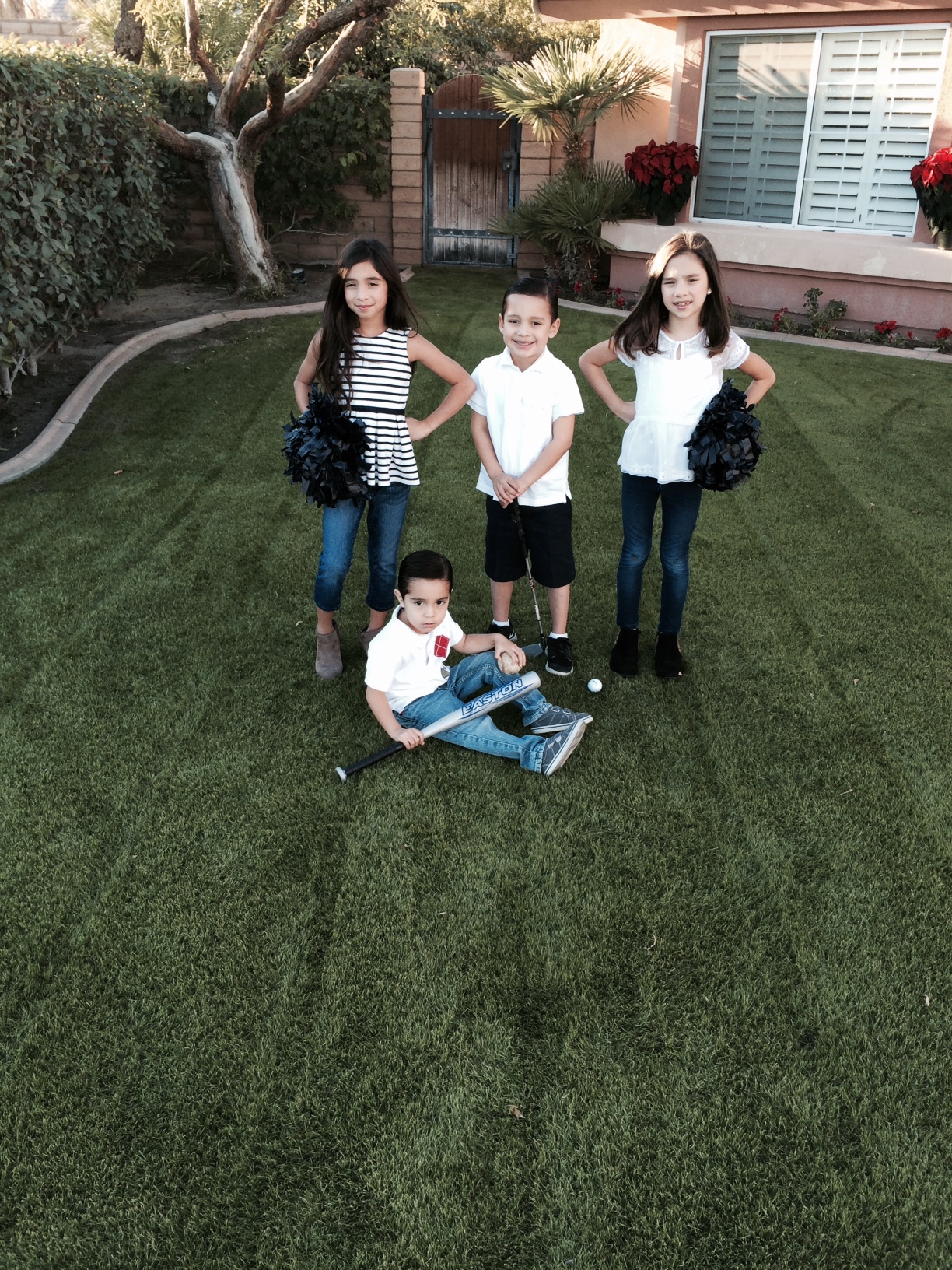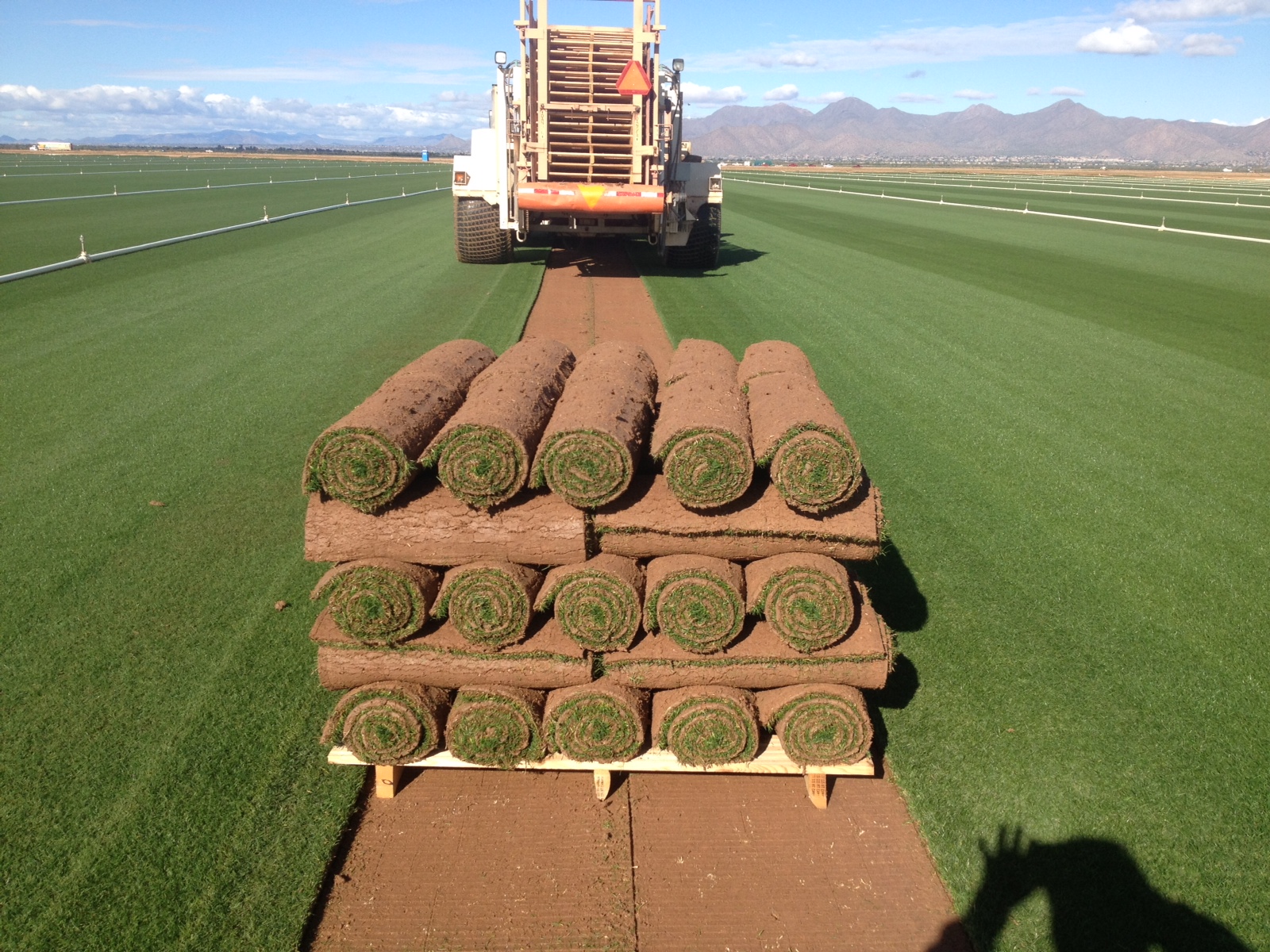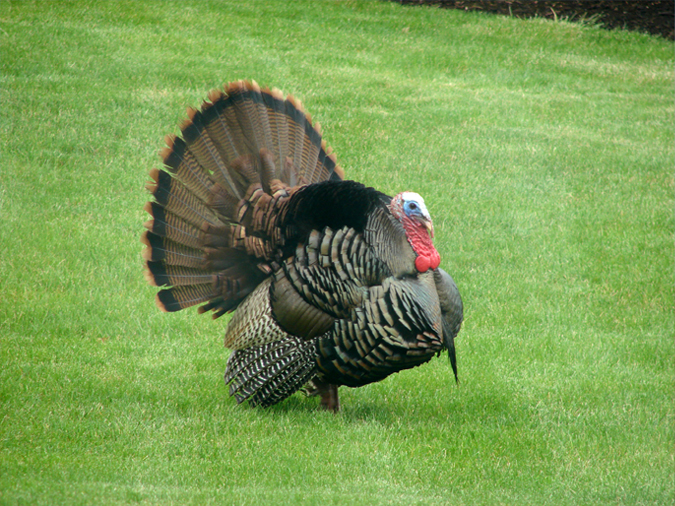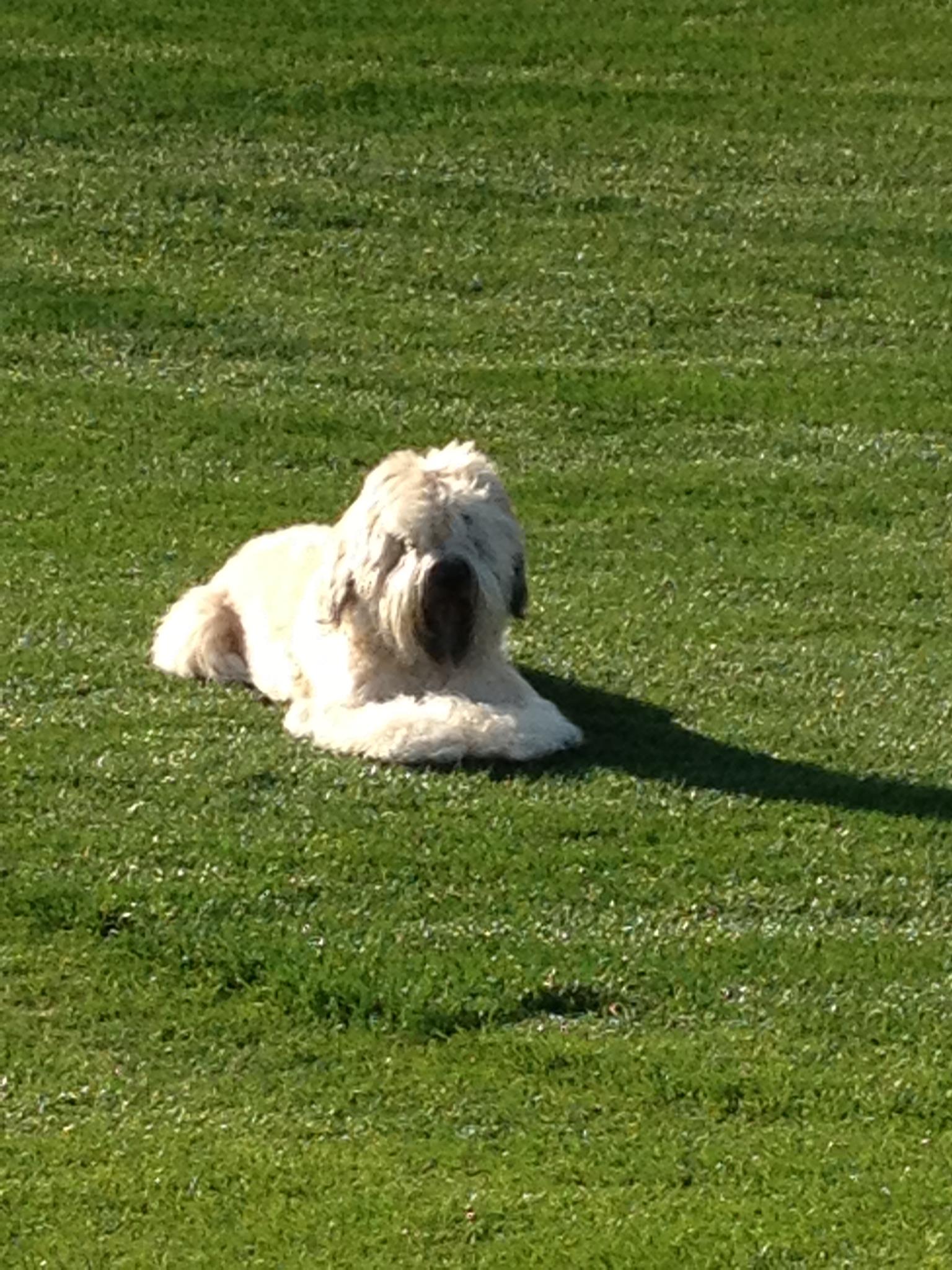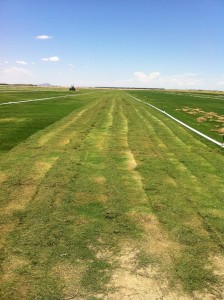Apr
Water Restrictions and Your Lawn. What Now? PART-1
With the new water restrictions in California, I think now is a great time to revisit the proper way to irrigate your lawn. We have some say they will be taking out their lawns due to the water restrictions, but before you do so I think it is important to take everything into consideration.
We often see every issue in society as black and white, but there is always a grey area. We all take our own individual sides of an issue, but we need to take the time to find a middle ground. Just as is the case in the political spectrum one answer isn’t always correct. Two sides need to work together to come up with a way of solving our problems. Over the next week I will be writing a two part series on how to conserve water and have a great lawn at the same time. Read the rest of this entry »
Comments Off on Water Restrictions and Your Lawn. What Now? PART-1Mar
Transitioning Your Lawn for Spring
If you have taken a look at the extended forecast you most likely saw that temperatures in the desert areas will be hitting close to 100 this weekend. No one wants to see that in late March unless you’re a sod producer or looking to get your warm season lawn to green up. While it is great for green up, it is still too early to know if this weather will stay or if we will get a minor cold snap. If we were assured that the 90’s were here to stay I would tell you to really start pushing your warm season turf, but it is best to ease into the season until soil temperatures reach 64 degrees.
Either way, transition time is upon us and it is time to start easing into the summer grass season. For people with non- overseeded turf this weather is great news for their lawn, and for others transition can bring a few headaches. I have outlined some simple steps to help you get your lawn to go from ryegrass to bermudagrass without any anxiety.
Comments Off on Transitioning Your Lawn for SpringFeb
WEEDS! Pre-Emergent Herbicides and Your Lawn
Last week it was raining and in the low 60’s and this week we will be pushing the low 80’s. Everyone knows that the rain is great for our lawns but it is also great for producing weeds.
As we move through February it is important to think about your lawn from the previous year. Did you have weed issues? Were you constantly pulling spurge out of the lawn during the summer? Even if you didn’t have a bad case of this last year you should still think about putting down a pre-emergent herbicide. The window to apply these is from now until the end of February. If you miss the window and the seedlings have already germinated you can bet you will be on your hands and knees this summer pulling weeds out of your turf.
Comments Off on WEEDS! Pre-Emergent Herbicides and Your Lawn
Nov
Thanksgiving Tips for Your Lawn
As we approach Thanksgiving it is a good time to start thinking about your winter fertilizer program. In past blogs I talked about getting down a few fertilizer applications prior to the first frost of the year. In general we will receive our first frost sometime between Thanksgiving and the first week of December. The first couple of frosts are usually pretty mild, but as we get deeper into December we will get some hard freezes which will start to affect your roots. Once we get frost all the way down to the roots it makes it tougher for the plant to take up fertilizer so foliar applications generally provide the best response.
For those unfamiliar with why plants freeze let me provide you with a simplistic definition. Water vapor condenses into liquid water and forms ice as the temperature drops at or below 32 degrees. Temperatures on the ground are typically cooler than the air just a few feet above the ground surface. On a clear, calm night with no little wind the cold air sinks to the ground level and while the thermometer may not read 32 degrees or lower, the ground temperature is below freezing. You will notice that when there is a heavy cloud cover there is typically no frost. This is because the grass does not need to emit as much radiation because the clouds reflect the radiated heat. On a cloudy day dew will form on the ground making it very unlikely that frost will form on the ground.
Comments Off on Thanksgiving Tips for Your LawnSep
It is ALMOST Time to Overseed Your Warm Season Lawn
The days are getting shorter and the heat is starting to die down a little as we enter the fall season. With fall comes the onset of overseeding in many parts of the country and the west coast is no different. For those new to overseeding let me give you a brief definition. Overseeding is simply the process of seeding a cool season grass into your warm season turfgrass in order to maintain winter color. This is not a mandatory process if you have grass, but it is one of the options that are out there for homeowners and professionals.
There are a few options during the fall months to take care of your lawn and without question the most popular is to overseed. Outside of overseeding you have the option of using turf paint such as Endurant to give your dormant grass a nice green appearance or you can just let your lawn go dormant for the winter months (brown can be the new green!). There is no right or wrong approach so decide what you would like to do as the temperatures begin to drop over the coming weeks. If you will be letting your lawn go dormant it will stay fairly green until the first hard frost which is around Thanksgiving and will start to green up in late March. If you have a paspalum lawn you can usually get through the month of December with a green lawn and it will start greening up in early March.
Comments Off on It is ALMOST Time to Overseed Your Warm Season LawnSep
Thinking About Overseeding Your Warm Season Lawn?
With the heavy rains and slightly cooler temperatures we had this past week no doubt people are thinking about overseeding. By the way, if your sprinklers are still set to on, turn them OFF. While the calendar says September 11th we’re still a few weeks away from having temperatures in the optimal window. Overseeding does not need to be a one day process. You can begin the process a little early and then when temperatures are in the 60’s at night you will just need to give your lawn one last haircut, drop the seed and begin watering.
Prepping for overseed is often a large ordeal, but starting the process gradually you can eliminate the headaches associated with trying to get it all done in one afternoon. I want to reiterate something I have said for the past few years. The height of the grass is not associated with a quality overseed. In other words scalping the grass down to the dirt does not guarantee good results, but opening up the turf canopy does. The shorter you mow your lawn the tighter the leaf blades become making it harder to get the ryegrass seed into the plant. If the seed is lying on the surface it will be slow to germinate and much of the seed will be lost. The seed needs a base to grow out of and getting inside the grass plant allows for perfect moisture, heat, and a solid growing medium. By looking at my last statement you can now understand why I have said without a good warm season grass base you will most likely have a poor ryegrass season. The seed will establish much faster inside a healthy grass stand than it will on bare dirt. Read the rest of this entry »
Comments Off on Thinking About Overseeding Your Warm Season Lawn?Aug
Evaluating Your Summer Lawn
As we move through the dog days of summer in California and Arizona, now is a good time to evaluate your turfgrass lawn. The summer is the optimal time to grow warm season turfgrasses so it is important to get good growth before the end of the season. The golden rule is that all warm season grasses need to have 100 days of growing without any competition in order to maintain their health. That is 100 days without any lingering ryegrass in the way. Think back to when the ryegrass was completely out of your lawn? Was it June or did it hang around until July? If you didn’t transition it by mowing lower and verticutting then most likely you still had some ryegrass until the humidity increased and wiped it out in July. Read the rest of this entry »
Comments Off on Evaluating Your Summer LawnJul
Using the Right Amount of Water
Lately there have been quite a few articles and stories talking about the over consumption of water in turfgrass. As many of us know parts of California have put strict demands on water usage and one of their main targets are home lawns. Over the past few years we have seen everything from districts paying home owners to take out grass, to people putting in artificial synthetic lawns. What we’re not seeing is a lot of information about how you can have a lawn and also conserve water. How do you know if you’re using water wisely? Today’s blog is all about tips for saving water and what you should be doing as a homeowner, landscaper, or golf course to help protect our natural resources. Read the rest of this entry »
Comments Off on Using the Right Amount of WaterJun
Summer Grass Problems & EASY Grass Solutions!
I thought it would be nice to put up some pictures of common summer issues–and some easy solutions. While there are several areas I could expand, I’ll leave it to the most common areas of concern for now……
During the summer months you will see scalping in turf for a variety of reasons but some of the most common are:
1. Lawn is too lush or juiced up on fertilizer
2. The lawn is too thick and it needs to be verticut to remove dead material between grass blades.
3. The mower blades are too dull or the wheels of the mower are set to uneven heights. The picture above represents this very well. Read the rest of this entry »
Comments Off on Summer Grass Problems & EASY Grass Solutions!Jun
Dog Urine and Your Turfgrass–Can’t We All Just “Get a Lawn?”
Pets are as much a part of our families as our kids, and keeping them happy is important. Do you know what makes for a happy dog? A beautiful lawn!
Did you know that putting in grass has been shown to reduce ground temperatures by as much as 30 degrees? We continually see a trend for people to use rocks in their yards because they don’t like the perceived maintenance of a yard. In this day and age it is important to think about the environment. Sod cleans the air and helps recharge our groundwater supplies. Turfgrass is one of nature’s finest and least expensive filters, and works to improve the environment. The front lawn of just 8 homes has the cooling effect of 70 tons of air conditioning. Just think how happy you and your pets would be to walk around during the summer months if everyone had natural grass in their yard. You can have a beautiful lawn and be responsible if you water wisely. Grass doesn’t waste water–people waste water.
Comments Off on Dog Urine and Your Turfgrass–Can’t We All Just “Get a Lawn?”
